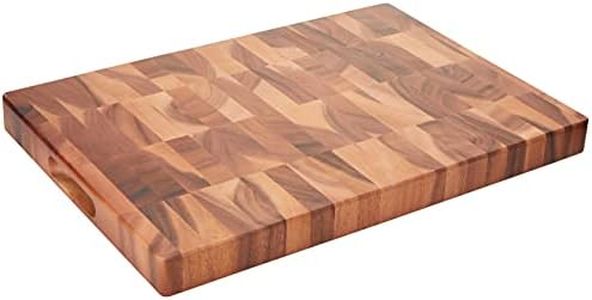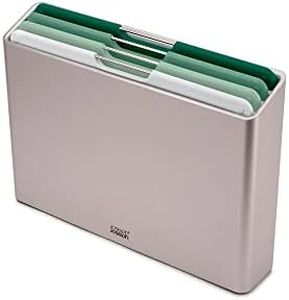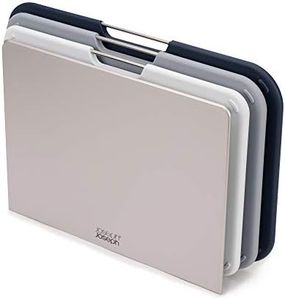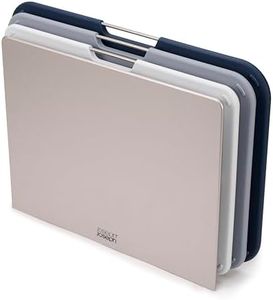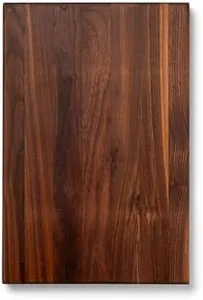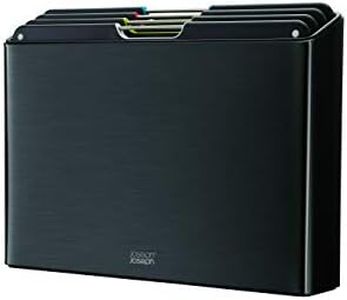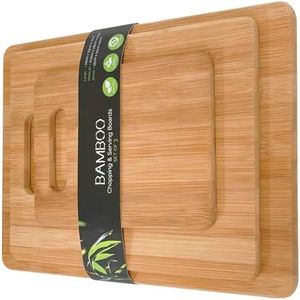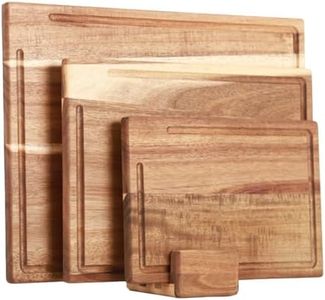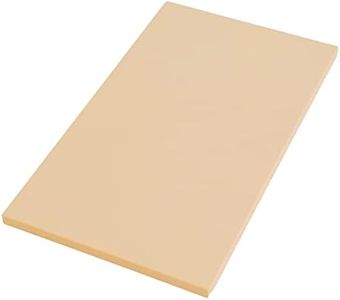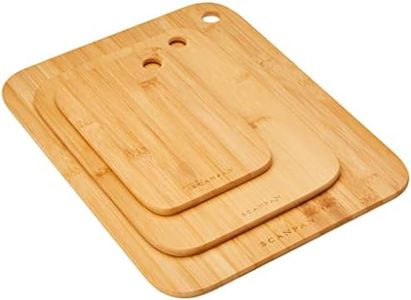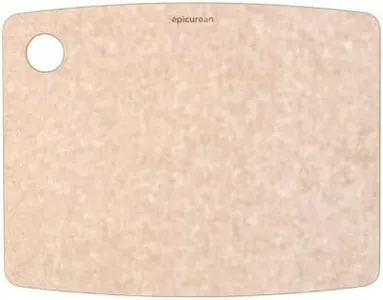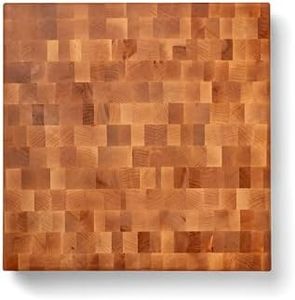We Use CookiesWe use cookies to enhance the security, performance,
functionality and for analytical and promotional activities. By continuing to browse this site you
are agreeing to our privacy policy
10 Best Cutting Boards
From leading brands and best sellers available on the web.Buying Guide for the Best Cutting Boards
Choosing the right cutting board can make cooking safer, easier, and more enjoyable. Since a cutting board is a basic tool you'll use daily, it's important to pick one that fits your kitchen habits and food preparation style. The ideal cutting board helps protect your knives, withstands regular cleaning, and keeps your food safe from cross-contamination. Consider where and how you'll use the cutting board, what types of food you usually prepare, and how much space you have for both using and storing it.MaterialThe material of a cutting board—such as wood, plastic, bamboo, or composite—has a big impact on its performance and maintenance. Wood boards are gentle on knives and great for dry foods, but they require more careful cleaning. Plastic boards are easy to sanitize and work well with raw meats and fish, though they may develop deep cuts over time. Bamboo is hard and eco-friendly, but it can be tough on knife edges. Composites blend durability and convenience but may lack the unique qualities of wood or plastic. Think about what you cook most often and how you'll clean the board to help decide the right material for you.
SizeCutting board size ranges from small boards suited for quick jobs like slicing fruit, to large boards intended for heavy-duty chopping or meal prep. Smaller boards are easier to handle, wash, and store, but may feel too cramped for chopping bigger items. Larger boards provide more workspace but can be harder to clean and require more counter space. Reflect on your kitchen size, storage space, and the portions of food you usually handle to choose a size that matches your needs.
ThicknessThickness affects the stability and longevity of a cutting board. Thin boards (under half an inch) are lightweight and simple to move or store but may warp or slip during use. Thicker boards (around one inch or more) are sturdier and less likely to slip, as well as more durable, but they're heavier and can be awkward to lift or clean. Consider how you'll use the board and whether you want it to stay in one place or be easy to move.
Non-Slip FeaturesSome cutting boards include non-slip edges or feet to keep them steady while you work. This is important for safety, especially if you do a lot of quick chopping or are concerned about accidents. If you want extra stability, look for features like rubber edges or grips. Alternatively, if you plan to use the board in different spots or want something easy to store, you may prefer a simpler design.
Maintenance and CleaningHow easy it is to clean and maintain a cutting board affects its lifespan and hygiene. Plastic boards often go into the dishwasher, making cleanup simple, while most wood boards need to be hand-washed and regularly treated with oil. If you want minimal maintenance, look for a board that suits your willingness to clean by hand or by machine, and consider what kinds of foods you'll prepare on it—raw meats require careful cleaning.
Juice Grooves and Additional FeaturesSome cutting boards include juice grooves along the edge, which collect liquids from meats or juicy produce and keep your counter cleaner. These features are useful if you prepare a lot of foods that release juice, but make the board a bit tougher to clean. Other extras might include handles for easy carrying or built-in compartments for food scraps. Think about your typical cooking habits to decide which, if any, of these features would be helpful.
